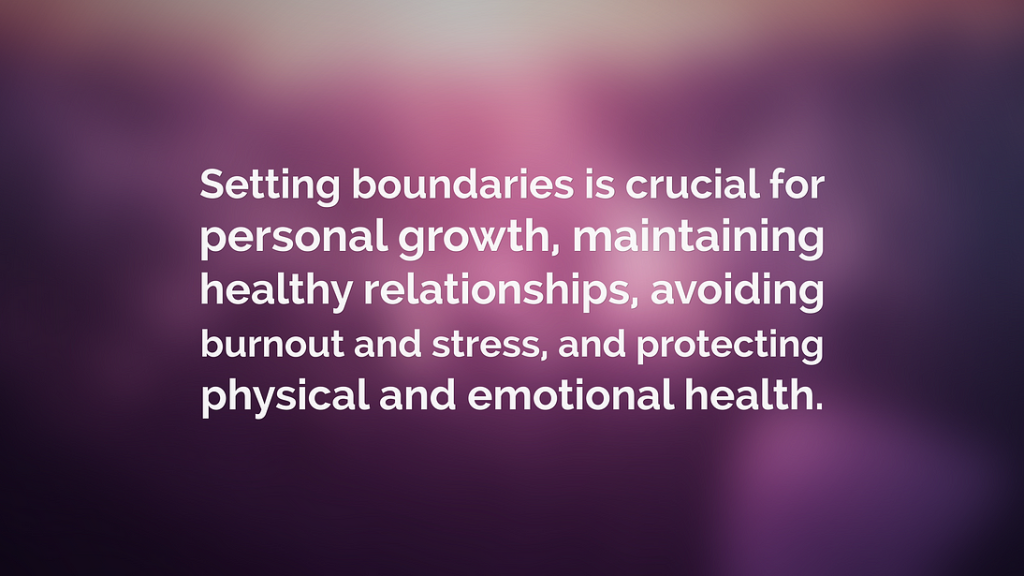Ever feel drained, overcommitted, or constantly interrupted? The problem might not be your workload but your lack of boundaries. Boundaries aren’t about shutting people out; they’re about protecting your time, energy, and well-being. In this post, we’ll explore why boundaries matter and how to set and maintain them effectively.
Why You Need Boundaries
Improve Relationships: People respect you more when you’re clear about your limits. Setting healthy boundaries prevents resentment and miscommunication.
Example: Politely declining last-minute requests that disrupt your schedule.
Boost Productivity: When you say “yes” to everything, your focus suffers. Setting boundaries—like designated work hours or distraction-free zones—helps you do deep, meaningful work.
Example: Turning off notifications during focus hours to prevent constant distractions.
Reduce Stress & Prevent Burnout: Overcommitting leads to exhaustion. Boundaries ensure you don’t spread yourself too thin.
Example: Not checking work emails after 7 PM to maintain work-life balance.

How to Set Effective Boundaries
- Know Your Priorities: Identify what truly matters—your goals, values, and limits.
Action: Write down your top three priorities and use them to guide your decisions. - Communicate Clearly: Be direct and firm when stating your boundaries. No need to over-explain or apologize.
Example: Instead of saying, “I’m kind of busy,” say, “I’m unavailable for meetings after 5 PM.” - Be Consistent: If you constantly bend your boundaries, people won’t take them seriously.
Action: Stick to your limits, even if it feels uncomfortable at first. - Use “I” Statements: Express your needs without blaming others.
Example: “I need quiet time to focus in the mornings” instead of “You always interrupt me.” - Set Consequences: If someone repeatedly crosses your boundaries, follow through with action.
Example: If a coworker keeps interrupting, remind them once, then start working with headphones or in a quiet space.
Common Challenges (and How to Overcome Them)
- Fear of Conflict: Many people avoid setting boundaries because they don’t want to upset others.
Remember, protecting your well-being is not selfish.
Solution: Practice saying no politely but firmly. Example: “I’d love to help, but I’m at full capacity right now.” - Guilt: You might feel bad about saying no, but overcommitting serves no one.
Solution: Reframe your thinking—every “no” to something unimportant is a “yes” to something that truly matters. - Pushback from Others: Some people may resist your boundaries at first, especially if they’re used to having unlimited access to you.
Solution: Stand your ground. Consistency helps them adjust.
Maintaining Boundaries for Long-Term Success
- Self-Awareness: Regularly check in with yourself—are your boundaries being respected?
- Self-Care: Boundaries are a form of self-care. Prioritize rest, downtime, and activities that recharge you.
- Adjust as Needed: Boundaries aren’t set in stone. If something isn’t working, refine it.
Conclusion
Boundaries are not walls; they are guardrails that keep your life on track. They help you work smarter, reduce stress, and build healthier relationships. Start small—choose one boundary to enforce today. Over time, you’ll notice a huge difference in your energy, productivity, and overall well-being.
